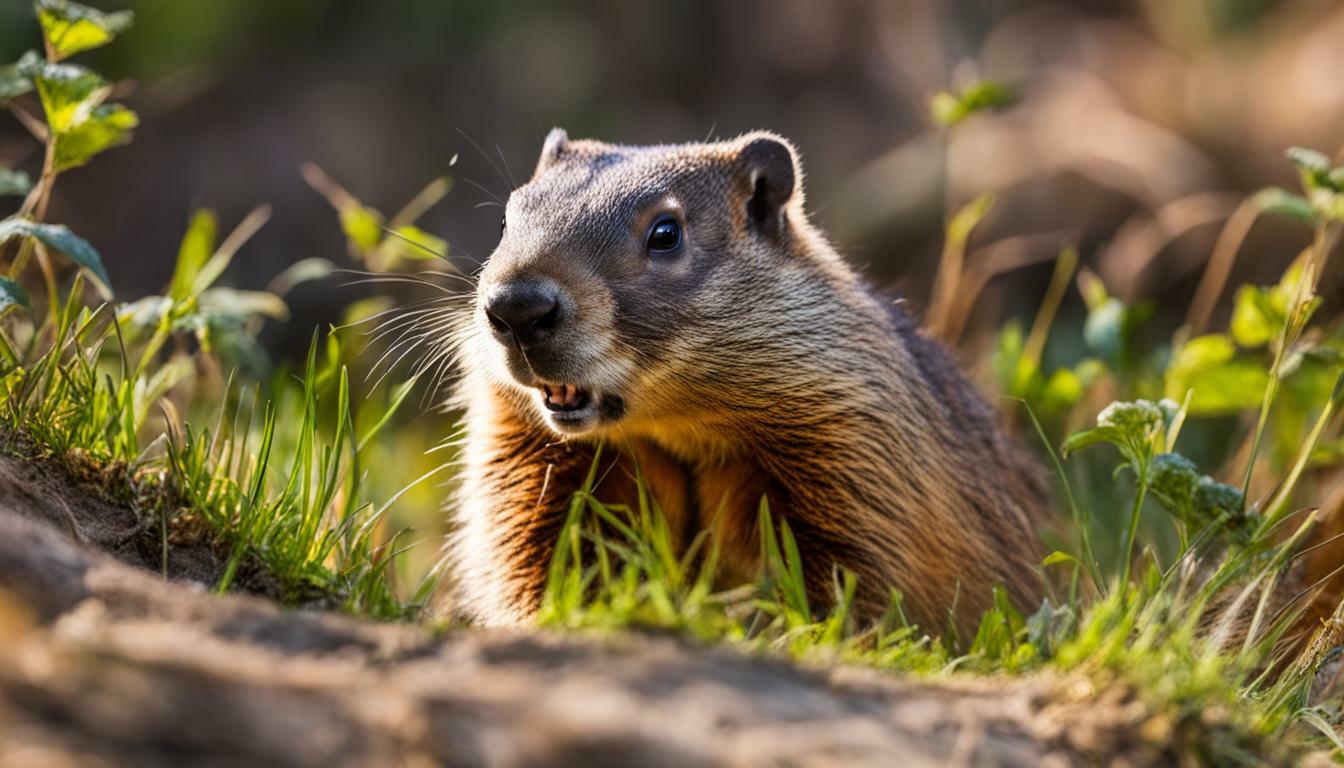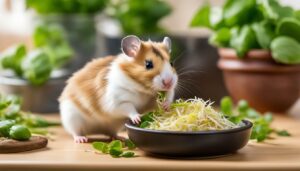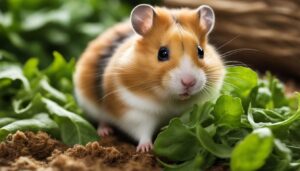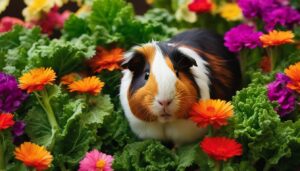Groundhogs, also known as woodchucks or whistle pigs, can be found in various parts of Georgia. They are stocky rodents with short legs, a short tail, rounded head, and light tan color with blackish fur mixed throughout. Groundhogs prefer areas with previously disturbed ground and abundant vegetation, such as kudzu patches, hillsides, and fields. They are skilled diggers and build complex tunnels to protect their young. Groundhogs primarily feed on fruits, vegetables, and other vegetation, making them a potential nuisance for gardeners. They can also cause structural damage to homes by digging around foundations and causing cracks.
Groundhogs can be easily removed by professional removal services. Their breeding season starts in early March to late April after hibernation, and they produce one litter per year with two to eight babies. While woodchucks are not a significant source of infectious diseases transmittable to humans, they can contract rabies. Habitat modification or trapping and exclusion are recommended for dealing with groundhog-related issues.
Woodchucks typically live in open forests, forest edges, and brushy rocky outcrops in the mountains and Piedmont region of northern Georgia. They are commonly found in the eastern United States except along the Coastal Plain. Woodchucks are a common species and are occasionally hunted by humans.
Key Takeaways:
- Groundhogs, also known as woodchucks or whistle pigs, are found in various parts of Georgia.
- They prefer areas with previously disturbed ground and abundant vegetation.
- Groundhogs are skilled diggers and build elaborate tunnels to protect their young.
- They primarily feed on fruits, vegetables, and other vegetation, which can create issues for gardeners.
- Professional removal services can easily handle groundhog-related problems.
Groundhog Facts: Georgia Wildlife Species
Groundhogs are a native species in Georgia and play an important role in the state’s wildlife ecosystem. Also known as woodchucks or whistle pigs, these stocky rodents can be found primarily in the northern parts of the state. With their short legs, rounded head, and light tan color with blackish fur mixed throughout, groundhogs are easily recognizable.
These skilled diggers are known for building complex tunnels to protect their young, which they bear once a year during their breeding season from early March to late April after hibernation. A groundhog litter typically consists of two to eight babies. While groundhogs primarily feed on fruits, vegetables, and other vegetation, their appetites can pose a challenge for gardeners. They are particularly fond of kudzu patches, hillsides, and fields with abundant vegetation.
Groundhogs can sometimes cause structural damage to homes by digging around foundations and causing cracks. However, removing them can be easily done by professional groundhog removal services. It’s worth noting that groundhogs are not a significant source of infectious diseases transmittable to humans, but they can contract rabies. To address groundhog-related issues, habitat modification or trapping and exclusion are recommended.
| Physical characteristics | Preferred habitat | Behavior |
|---|---|---|
| Stocky build, short legs, short tail | Previously disturbed ground, kudzu patches, hillsides, fields | Skilled diggers, build complex tunnels, primarily diurnal |
| Light tan color with blackish fur mixed throughout | Open forests, forest edges, brushy rocky outcrops | Feeds on fruits, vegetables, and other vegetation |
| Breed once a year with 2-8 babies per litter | Mountains and Piedmont region of northern Georgia | Can cause structural damage to homes by digging around foundations |
Woodchucks, as they are commonly known, are a common species found in the eastern United States, excluding the Coastal Plain. They are occasionally hunted by humans and contribute to the biodiversity of Georgia’s wildlife population.
Groundhog Behavior in Georgia
Groundhogs in Georgia exhibit specific behaviors that are unique to their species and their environment. These stocky rodents are known for their excellent digging skills and build complex tunnels underground. They prefer areas with disturbed ground and abundant vegetation, such as kudzu patches, hillsides, and fields. Groundhogs are primarily herbivores and feed on fruits, vegetables, and other plant matter, which can make them a nuisance for gardeners.
When it comes to behavior around humans, groundhogs are generally shy and elusive creatures. They are most active during the day and tend to retreat to their burrows when they sense any potential danger. However, they can become more aggressive if they feel threatened or cornered. It is best to observe groundhogs from a distance and avoid any direct contact.
Groundhog Habits
Groundhogs have a few distinctive habits that are worth noting. They are excellent climbers and can often be seen perched on rocks or fallen logs, surveying their surroundings. They are also skilled swimmers and can take to the water if needed. During the breeding season, which typically occurs from early March to late April, groundhogs become more active and social. They produce one litter per year, with two to eight babies, known as kits. These kits stay with their mother until they are independent enough to venture out on their own.
In summary, groundhogs in Georgia are fascinating creatures with unique behaviors. They are skilled diggers, herbivores, and prefer areas with disturbed ground and abundant vegetation. While they are generally shy around humans, it is important to give them their space and avoid any direct interactions. Understanding their habits and behaviors can help us coexist peacefully with these native wildlife species.
| Behavior | Characteristics |
|---|---|
| Digging | Groundhogs are skilled diggers and build complex tunnels underground for protection and shelter. |
| Feeding | Groundhogs primarily feed on fruits, vegetables, and other plant matter, making them a potential nuisance for gardeners. |
| Social Behavior | During the breeding season, groundhogs become more active and social, producing one litter per year with two to eight babies. |
| Aggression | While groundhogs are generally shy, they can become more aggressive if they feel threatened or cornered. |
Georgia Groundhog Sightings and Distribution
Groundhogs can be spotted in various regions of Georgia, particularly in the northern parts of the state. These stocky rodents, also known as woodchucks or whistle pigs, are characterized by their short legs, rounded heads, and light tan color with blackish fur mixed throughout. They prefer areas with previously disturbed ground and abundant vegetation, such as kudzu patches, hillsides, and fields.
Groundhogs are skilled diggers and build complex tunnels to protect their young. They primarily feed on fruits, vegetables, and other vegetation, which can make them a potential nuisance for gardeners. Additionally, their digging habits can cause structural damage to homes by undermining foundations and leading to cracks.
The habitats of groundhogs in Georgia are commonly found in open forests, forest edges, and brushy rocky outcrops in the mountains and Piedmont region of the state. While groundhogs are a common species in Georgia and other parts of the eastern United States, they are not typically found along the Coastal Plain. Although their presence is widespread, groundhogs are occasionally hunted by humans for various reasons.
| Characteristics | Groundhogs |
|---|---|
| Physical Appearance | Stocky rodents with short legs, a short tail, and a rounded head. They have light tan color with blackish fur mixed throughout. |
| Preferred Habitat | Areas with previously disturbed ground and abundant vegetation, such as kudzu patches, hillsides, and fields. |
| Feeding Habits | Primarily feed on fruits, vegetables, and other vegetation. |
| Behavior | Skilled diggers that build complex tunnels to protect their young. |
| Impact | Potential nuisance for gardeners and can cause structural damage to homes. |
While groundhogs in Georgia are not a significant source of infectious diseases transmittable to humans, it’s important to note that they can contract rabies. If you encounter a groundhog and suspect it may be infected with rabies, it is best to contact professional removal services to handle the situation safely.
To deal with groundhog-related issues, habitat modification or trapping and exclusion methods are recommended. These methods can help mitigate the damage caused by groundhogs and ensure their relocation to a more suitable environment.
Groundhog Habitat in Georgia
Groundhogs in Georgia can be found in habitats that offer a combination of vegetation and disturbed ground. These stocky rodents, also known as woodchucks or whistle pigs, prefer areas with abundant vegetation such as kudzu patches, hillsides, and fields. The northern parts of the state, particularly the mountains and Piedmont region, provide suitable environments for groundhogs to thrive.
Groundhogs are skilled diggers and build complex tunnel systems to protect their young and seek shelter. These tunnels can extend up to several feet underground and have multiple entrances and chambers. The disturbed ground, such as previously dug burrows or areas with loose soil, is ideal for groundhogs to create their intricate underground homes.
| Physical Characteristics | Habitat Preferences |
|---|---|
| Stocky build with short legs | Areas with abundant vegetation |
| Rounded head and short tail | Disturbed ground, such as kudzu patches |
| Light tan color with blackish fur mixed throughout | Hillsides and fields |
Groundhogs primarily feed on fruits, vegetables, and other vegetation, which makes them a potential nuisance for gardeners. Their diet preferences coincide with their habitat choices, as they seek out areas with abundant plant life. However, their feeding habits can also cause issues when they target crops or garden produce, leading to frustration for farmers and homeowners.
When dealing with groundhog-related issues, habitat modification or trapping and exclusion are recommended measures. It is important to consider the potential damage groundhogs can cause to homes and structures, such as digging around foundations and causing cracks. By understanding their habitat preferences, it becomes easier to implement effective strategies to address groundhog concerns.
Woodchuck Behavior and Characteristics
Woodchucks, or groundhogs, are stocky rodents with distinct physical characteristics. They have short legs, a short tail, a rounded head, and light tan fur with blackish patches mixed throughout. These native wildlife species can be found in Georgia, particularly in the northern parts of the state. Groundhogs prefer areas with previously disturbed ground and abundant vegetation, such as kudzu patches, hillsides, and fields.
Skilled diggers, groundhogs are known for building complex tunnels to protect themselves and their young. These burrows serve as their homes and provide protection from predators. The tunnels can extend up to several feet underground and have multiple chambers for different purposes, including hibernation, nesting, and defecation. Groundhogs primarily feed on fruits, vegetables, and other vegetation, which can make them a potential nuisance for gardeners.
While groundhogs are generally harmless, they can cause structural damage to homes by digging around foundations and causing cracks. Additionally, they can contract rabies, although they are not a significant source of infectious diseases transmittable to humans. If you encounter groundhog-related issues, it is recommended to seek professional removal services. They have the expertise to safely and humanely remove these rodents from your property and prevent any further damage.
| Breedin Season | Litter Size |
|---|---|
| Early March to late April | Two to eight babies |
Woodchucks typically inhabit open forests, forest edges, and brushy rocky outcrops in the mountains and Piedmont region of northern Georgia. While they are a common species in the eastern United States, they are rarely found along the Coastal Plain. Occasionally hunted by humans, woodchucks add to the diverse wildlife population in Georgia and contribute to the natural balance of the ecosystem.
In conclusion, woodchucks, or groundhogs, are fascinating creatures with their distinctive physical characteristics and interesting behaviors. As native wildlife species in Georgia, understanding their habitats, behavior, and potential impact on human properties can help create a harmonious coexistence.
Groundhog Damage and Control in Georgia
While groundhogs play an important role in Georgia’s wildlife, they can also cause damage to gardens and structures. These stocky rodents are skilled diggers, and their habit of burrowing can lead to structural damage when they dig around foundations, decks, or patios. The resulting tunnels can weaken the ground and cause cracks, posing a risk to the structural integrity of buildings. Additionally, groundhogs have a voracious appetite for fruits, vegetables, and other vegetation, making them a nuisance for gardeners and farmers.
If you’re facing groundhog-related issues in Georgia, it’s important to employ effective control measures. One option is to modify the habitat to make it less attractive to these animals. Removing dense vegetation, sealing off potential den sites, and reducing food sources can discourage groundhogs from taking up residence in your yard or garden. However, habitat modification alone may not always suffice, especially if the groundhog population is well-established.
Trapping and exclusion
In such cases, trapping and exclusion methods may be more effective. Live trapping can allow you to safely remove groundhogs from your property. Once trapped, it’s essential to release them in suitable alternative habitats, away from residential areas. It’s important to check your local regulations regarding the live trapping and relocation of wildlife.
For those who prefer professional assistance, there are groundhog removal services available in Georgia. These experts have the knowledge, experience, and equipment to safely and humanely remove groundhogs from your property. They can also provide advice on preventing future infestations and minimizing the likelihood of further damage.
| Control Methods | Pros | Cons |
|---|---|---|
| Habitat Modification | – Discourages groundhogs from settling in your yard – Reduces potential damage to structures and gardens |
– May not be effective for well-established groundhog populations – Requires ongoing maintenance |
| Live Trapping | – Allows for safe removal and relocation of groundhogs – Appropriate for managing small populations |
– Requires knowledge of trapping techniques – Check local regulations on trapping and relocation |
| Professional Removal Services | – Experts in safe and humane removal – Knowledgeable on prevention and control methods |
– Costs associated with professional services |
Remember, it’s essential to address groundhog issues promptly to minimize the potential damage they can cause. Whether you choose to employ habitat modification, live trapping, or professional removal services, taking action can help protect your gardens and structures from the impact of groundhog activity.
Groundhog Removal Services in Georgia
If you’re facing groundhog-related problems in Georgia, there are professional removal services available to assist you. These experts specialize in safely and effectively removing groundhogs from your property, ensuring that you can regain control of your space without causing harm to the animals.
One of the main reasons why groundhogs can become a nuisance is their ability to dig complex tunnels. These tunnels can damage foundations, create structural issues, and pose safety risks. By hiring a professional removal service, you can have these tunnels located and safely sealed, preventing further damage and ensuring the safety of your property.
In addition to structural damage, groundhogs are known for their voracious appetites, particularly when it comes to vegetation. If you have a garden or landscape that is being continuously targeted by groundhogs, a removal service can help implement measures to protect your plants. This may include installing fencing or using deterrents to discourage groundhogs from feasting on your greens.
When selecting a groundhog removal service in Georgia, it’s essential to choose a reputable and licensed company. These professionals have the necessary experience and knowledge to handle groundhog-related issues effectively. They can also provide advice on how to prevent future groundhog infestations, ensuring long-term peace of mind.
So, if groundhogs have become a problem on your property, don’t hesitate to reach out to a professional removal service in Georgia. They will handle the situation professionally, addressing any concerns you may have and providing effective solutions to alleviate the presence of groundhogs on your property.
Georgia Groundhog Removal Services: A Comparison
Before choosing a groundhog removal service in Georgia, it’s important to consider your options and select the one that suits your needs best. Here is a comparison of some notable services in the area:
| Company Name | Services Offered | Service Area | Contact Information |
|---|---|---|---|
| Groundhog Solutions | Live trapping and relocation, exclusion services, damage repair | Statewide | Phone: 555-123-4567 Email: info@groundhogsolutions.com |
| Georgia Wildlife Removal | Humane trapping and removal, habitat modification | Atlanta Metro Area | Phone: 555-987-6543 Email: contact@gawildliferemoval.com |
| SafeGuard Pest Solutions | Trapping, exclusion services, damage repair | Augusta and surrounding areas | Phone: 555-789-0123 Email: info@safeguardpestsolutions.com |
Remember to contact each service provider directly to discuss your specific situation and obtain a personalized quote. By comparing their services, service areas, and contact information, you can make an informed decision and choose the groundhog removal service that best fits your needs in Georgia.
Conclusion
Groundhogs are indeed present in Georgia, particularly in the northern parts of the state, and play a significant role in the state’s wildlife ecosystem. Also known as woodchucks or whistle pigs, these stocky rodents with short legs, a short tail, and a rounded head can be easily identified by their light tan color with blackish fur mixed throughout.
Groundhogs prefer areas with previously disturbed ground and abundant vegetation, making kudzu patches, hillsides, and fields their ideal habitat. Skilled diggers, they construct complex tunnels to protect their young and seek shelter. However, their digging habits can cause structural damage to homes by undermining foundations and causing cracks.
Primarily herbivorous, groundhogs feed on fruits, vegetables, and other vegetation, which can make them a nuisance for gardeners. While they are not a significant source of infectious diseases transmissible to humans, it is important to note that groundhogs can contract rabies. To address groundhog-related issues, habitat modification, trapping, and exclusion techniques are effective methods. Professional removal services are also available for those in need.
Woodchucks are commonly found in the eastern United States, including parts of Georgia. They typically inhabit open forests, forest edges, and brushy rocky outcrops in the mountains and Piedmont region of northern Georgia. Although not typically found along the Coastal Plain, woodchucks are a common species and are occasionally hunted by humans.
FAQ
Are groundhogs found in Georgia?
Yes, groundhogs, also known as woodchucks or whistle pigs, can be found in Georgia, particularly in the northern parts of the state.
What do groundhogs look like?
Groundhogs are stocky rodents with short legs, a short tail, rounded head, and light tan color with blackish fur mixed throughout.
Where do groundhogs prefer to live?
Groundhogs prefer areas with previously disturbed ground and abundant vegetation, such as kudzu patches, hillsides, and fields.
What do groundhogs eat?
Groundhogs primarily feed on fruits, vegetables, and other vegetation, making them a potential nuisance for gardeners.
Can groundhogs cause damage to homes?
Yes, groundhogs can cause structural damage to homes by digging around foundations and causing cracks.
How can groundhogs be removed?
Groundhogs can be easily removed by professional removal services.
How many babies do groundhogs have?
Groundhogs produce one litter per year with two to eight babies.
Are groundhogs a threat to humans?
Groundhogs are not a significant source of infectious diseases transmittable to humans, but they can contract rabies.
Where do woodchucks live in Georgia?
Woodchucks, or groundhogs, typically live in open forests, forest edges, and brushy rocky outcrops in the mountains and Piedmont region of northern Georgia.
Are woodchucks hunted in Georgia?
Woodchucks are a common species and are occasionally hunted by humans.




